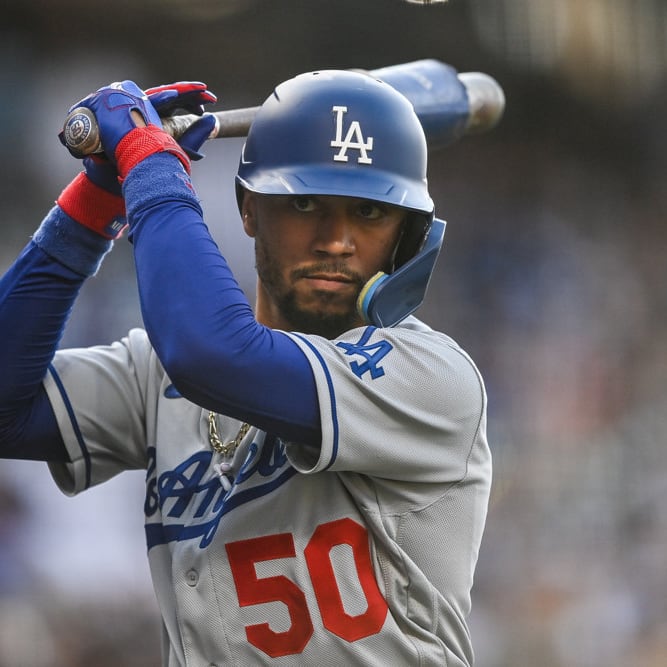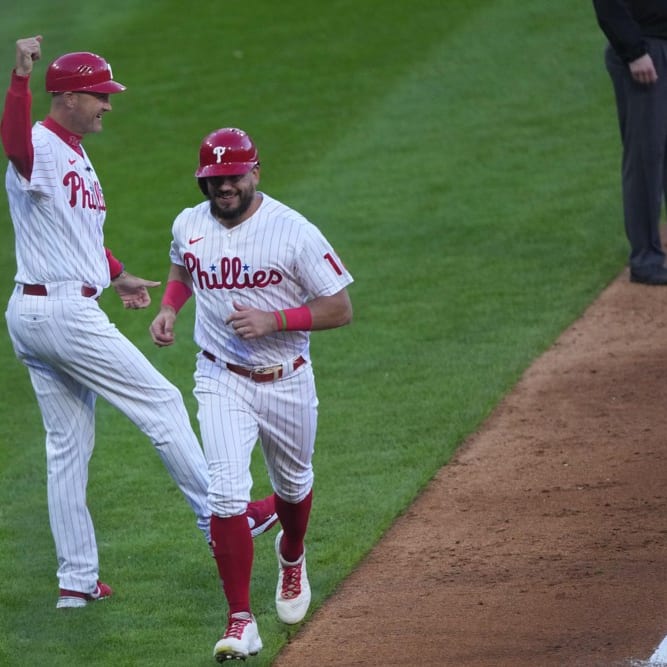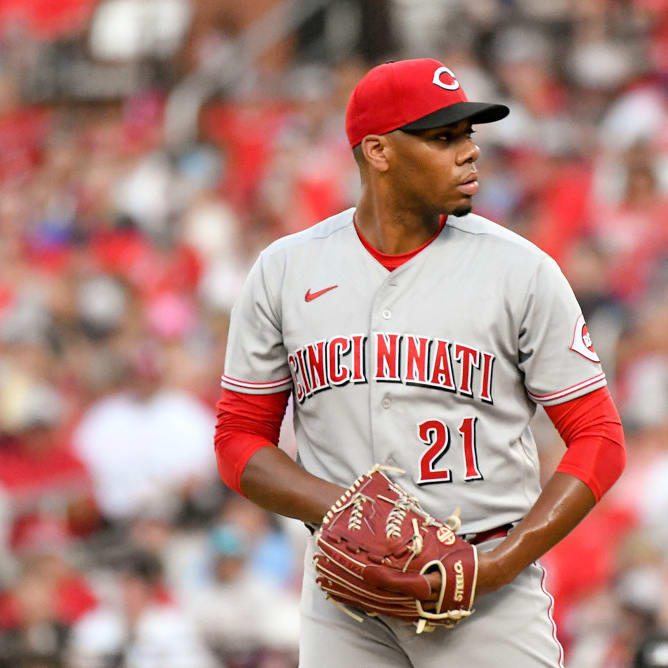This article is part of our The Z Files series.
But first a little background so you have a better feel for where I'm coming from. Before my hobby became my vocation, I was a chemist. I'm wired to trust processes proven to be viable. That mindset has carried over to my work as a fantasy baseball analyst and player. Be it projection theory, player valuation or game theory with respect to roster construction, decisions are based on research, be it my own or from other trusted sources.
One of the keys to DFS is identifying players that are in a favorable spot. Salary is a factor but for now, the focus will be on performance. Every hitter and pitcher has a baseline expectation. Think of that as a rest-of-season projection. That expectation can be considered to be neutral. If scenarios can be identified that raise expectations for a particular game, that could put the player in a good spot.
Quality of Opposition
While the data will not be provided, perhaps the most relevant factor is quality of opposition. The expectation of a hitter improves facing a below-average pitcher while it declines when squaring off with an above-average hurler. Similarly, a pitcher's potential increases when facing a weak
But first a little background so you have a better feel for where I'm coming from. Before my hobby became my vocation, I was a chemist. I'm wired to trust processes proven to be viable. That mindset has carried over to my work as a fantasy baseball analyst and player. Be it projection theory, player valuation or game theory with respect to roster construction, decisions are based on research, be it my own or from other trusted sources.
One of the keys to DFS is identifying players that are in a favorable spot. Salary is a factor but for now, the focus will be on performance. Every hitter and pitcher has a baseline expectation. Think of that as a rest-of-season projection. That expectation can be considered to be neutral. If scenarios can be identified that raise expectations for a particular game, that could put the player in a good spot.
Quality of Opposition
While the data will not be provided, perhaps the most relevant factor is quality of opposition. The expectation of a hitter improves facing a below-average pitcher while it declines when squaring off with an above-average hurler. Similarly, a pitcher's potential increases when facing a weak lineup but diminishes when toeing the rubber against a strong squad. There are ways to quantify this but they go beyond the scope of this discussion.
Park Factors
Baked into the players' expectations are the impact of their home venues. Keeping in mind the effect of fundamental skills at home versus on the road will be discussed momentarily, a player's expectation needs to be adjusted for the venue that day.
It's essential to realize some parks play differently for homers and runs. When considering park effect, the home run index is of primary importance for hitters while the runs factor is paramount for pitchers. As an example, a common mistake is to consider Kauffman Stadium a pitcher's park since it's known to suppress power. The truth is The K actually plays slightly favorable for runs.
Note to self: Listing these contradictory venues makes for a good blog piece.
Home Versus Away
Home field advantage is real and can be measured in terms of a player's skills at home and on the road. Let's start with pitchers.
| PITCHING | WIN % | ERA | WHIP | IP/G | K % | BB % | HR % | BABIP | wOBA | STRIKE % |
| Home | 53.6 | 3.80 | 1.25 | 6.0 | 19.8 | 7.0 | 2.5 | 0.296 | 0.313 | 64.3 |
| Away | 46.4 | 4.15 | 1.33 | 5.2 | 18.7 | 7.5 | 2.7 | 0.303 | 0.326 | 63.7 |
| % Diff | 14.4 | 8.8 | 6.2 | 14.3 | 5.7 | 6.9 | 7.7 | 2.3 | 4.1 | 0.9 |
Presented is the three-year average from 2013-2015 for several telltale pitching metrics. At the bottom is the percent difference from the seasonal numbers. It's clear a pitcher performs better at home than away, which at least should result in a more favorable outcome than the neutral expectation. Remember, this is just skills and is independent of park factors. If you're actually adjusting a neutral projection, there two distinct steps, one for park and one for home versus away.
You might recall a couple of weeks ago when the topic was unearthing solid cash game pitchers. One of the conclusions was home starts are preferred. Now you can visualize the reason.
Now let's look at hitters.
| HITTING | OPS | ISO | K % | BB % | HR % | BABIP | wOBA |
| Home | 0.737 | 0.149 | 19.2 | 8.2 | 2.6 | 0.303 | 0.325 |
| Away | 0.710 | 0.143 | 20.1 | 7.6 | 2.5 | 0.297 | 0.314 |
| % Diff | 3.7 | 4.1 | 4.6 | 7.6 | 3.9 | 2.0 | 3.4 |
Again, looking at both skills and outcomes, a batter enjoys a home field advantage. That said, something to keep in mind is a team will accrue more total plate appearances on the road and as we'll see soon, plate appearances are important. The reason for the extra trips to the dish on the road is unless a home win is of the walk-off variety, in victories, the home team only hits in eight innings while they're assured the full complement of nine innings on the road regardless. Overall, data still favors using hitters at home since the increased runs trumps the added at-bats, especially since those usually go to bottom-of-the-order hitters. In fact, a good rule of thumb is that if an away hitter in the lower part of the order is in a good spot, he could be an intriguing contrarian play.
Platoon Splits
Even casual baseball fans know a lefty-lefty or righty-righty matchup favors the pitcher while opposite handedness favors the hitter, but how much? Let's look at the 2013-2015 average of some apropos statistics.
| SPLIT | OPS | ISO | K % | BB % | HR % | BABIP | wOBA |
| RHB vs LHP | 0.747 | 0.155 | 18.9 | 8.4 | 2.7 | 0.304 | 0.329 |
| LHB vs RHP | 0.739 | 0.151 | 18.8 | 8.9 | 2.6 | 0.299 | 0.326 |
| RHB vs RHP | 0.709 | 0.143 | 20.4 | 6.8 | 2.6 | 0.299 | 0.313 |
| LHB vs LHP | 0.662 | 0.115 | 22.2 | 7.2 | 1.9 | 0.299 | 0.296 |
As most assumed, the lefty-on-lefty matchup is the worst for hitters, followed by righty-on-righty with left-right and right-left being very close. The key consideration here is while platoon splits exert an influence, they're not the be-all and end-all. A right-handed swinger at home facing a lousy righty tosser could be better than a lefty-righty matchup between a couple of evenly skilled players. For those wondering about reverse splits, hang in there, we'll get to that.
Lineup Position
As alluded to earlier, a player's spot in the batting order is a big factor for two reasons. The first is simply more chances, as a top-of-the-order hitter is more likely to get an extra try. Second, better hitters reside at the top, increasing the potential for run production.
Here's a table illustrating the difference in average plate appearances as you descend down the batting order, along with average DraftKings points per game from each lineup spot. The data is broken into American and National League to account for the designated hitter in the junior circuit. Keep in mind the points are a function of both opportunity and better surrounding hitters.
| LINEUP SPOT | AL PAs | NL PAs | AL DK PTs | ML DK PTs |
| 1st | 4.65 | 4.62 | 8.0 | 8.0 |
| 2nd | 4.54 | 4.52 | 7.8 | 7.6 |
| 3rd | 4.43 | 4.41 | 8.2 | 8.4 |
| 4th | 4.33 | 4.32 | 7.9 | 7.8 |
| 5th | 4.23 | 4.22 | 7.2 | 7.2 |
| 6th | 4.12 | 4.11 | 6.8 | 6.5 |
| 7th | 4.01 | 3.99 | 6.3 | 6.2 |
| 8th | 3.89 | 3.87 | 6.0 | 5.5 |
| 9th | 3.77 | 3.75 | 5.5 | 3.7 |
Now you can see why lineup spot is so integral. It's not so much if the Boston Red Sox flip-flop Xander Bogaerts and David Ortiz between the three-hole and clean-up. Look at the difference in potential when Ketel Marte hits ninth against righties and second versus southpaws. Or if Kolten Wong is hitting second instead of seventh on a Sunday when a couple of regulars get an off-day.
Tools like the Rotowire lineup generator quantify these factors in an effort to produce a daily projection. While it's recommended you check that out, if you're more of an intuitive player, using the above to uncover favorable matchups is a great way to get an edge.
That's a brief review of the do's. Now for some don'ts with the caveat that this comes from the perspective of a scientist. There's tangible data to support incorporating all of the above in analysis. Some of what is about to be offered may indeed be relevant. The catch is hard evidence supporting its viability doesn't exist. The message isn't that what ensues isn't real, but rather that it's not predictive. The rationale proponents preach is narrative or anecdotal. Trust me, if there was a research study supporting their claims, they'd be using it in the same manner they criticize my ilk for being too reliant on a spreadsheet. Sorry, but just because I played high school ball, or a retired ballplayer turned fantasy analyst says it's true, doesn't mean it's actionable. Again, there's a big difference between doesn't exist and can't be proven to be predictive.
Batter Versus Pitcher
Yes, the dreaded BvP. Are there some hitters that own a pitcher? Yeah, probably. Are there some pitchers that ridiculously frustrate certain hitters? Sure. But there isn't any salient means of identifying those that are genuine as opposed to those that are sample size noise. Without such proof, it's better to rely on factors that can be concretely identified as useful.
Hot and Cold Streaks
While there are some recent studies that suggest streaks are real, there isn't anything yet that definitively shows the probability of a hitter remaining hot (or cold) that could yield an advantage. That is to say, even if streaks are real, they can start or stop any time. A hitter being hot or cold has limited, if any, predictive value. In fact, the majority of perceived hot streaks are nothing more than a series of favorable matchups.
With respect to both BvP and steaks, it's not that it's wrong to use them. It's more that doing so, in lieu of more tangible means of evaluation, doesn't provide the assumed edge. Using them doesn't hurt, but it also doesn't help.
Reverse Splits
This is an example of something not to do that has research supporting its flaws. A lot of analysts like to point out a player with reverse splits, usually a right-handed hitter that is perceived to hit right-handed pitching better than he does southpaws. The advantage is many will gloss over a right-on-right match-up, looking for a batter with the platoon edge. Hence using a hitter with a reverse split is useful when aiming for some lineup differentiation.
The problem is there's some elegant work done by Tom M. Tango, Mitchel G. Lichtman and Andrew E. Dolphin that's been published in The Book: Playing the Percentages in Baseball showing that a hitter needs almost a career's worth of plate appearances facing left-handed pitching before he definitely owns his splits. Before that time, his career splits need to be regressed to the global average. The nearer a player is to the requisite trips to the batter's box, the less his splits need to be regressed, but some adjustment is still necessary. The number of plate appearances needed against lefties before regression is no longer required is 2000 PAs for RHB, 1000 PAs for LHB and 600 PAs for switch-hitters. Approximately one-quarter of pitchers are southpaws, which means a full-time hitter averaging 650 plate appearances faces left-handers about 162 times a season. This means a left-handed hitter need six full seasons before they own their splits, while righties need 12. That's a lot. Now factor in that on the average, lefty swingers face southpaws only 18 percent of the time. That six years is even longer.
Let's look at Yoenis Cespedes, as he's often cited as a strong option versus right-handers based on a perceived reverse split. We'll use OPS since it's easiest to calculate, though admittedly not as reflective as weighted on base average (wOBA) or wRC+ are when it comes to DFS scoring. Shown are the league average splits for all right-handed hitters, Cespedes' career splits including 667 career plate appearances against LHP, what his theoretical splits would be if he followed league average tendencies going forward and what his actionable splits are based on those 667 plate appearances (about one-third of the way to the 2000 threshold).
| OPS | LEAGUE AVERAGE | CESPEDES | THEORETICAL | REGRESSED |
| vs RHP | 0.680 | 0.816 | 0.793 | 0.801 |
| vs LHP | 0.726 | 0.790 | 0.846 | 0.827 |
| Overall | 0.694 | 0.809 | 0.809 | 0.809 |
For those using a spreadsheet to adjust baseline expectations, you can't just plug in his current platoon splits to adjust for the handedness of the pitcher. But you also can't assume league average. The final column is what should be factored in when converting Cespedes' baseline expectation to a projection for that game. Relatively speaking, he's still better than other right-handed hitters without the platoon edge, but the advantage isn't as significant as it appears.
There you have it, some do's and don'ts with respect to setting DFS lineups. Now you'll have to excuse me, I need to get mine in before lineups lock.










